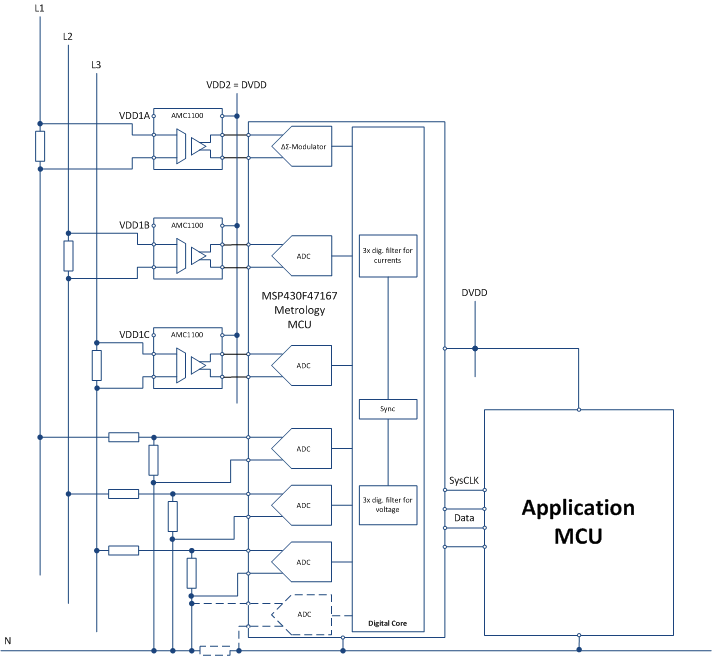SBAS562B April 2012 – December 2019 AMC1100
PRODUCTION DATA.
- 1 Features
- 2 Applications
- 3 Description
- 4 Revision History
- 5 Pin Configuration and Functions
-
6 Specifications
- 6.1 Absolute Maximum Ratings
- 6.2 ESD Ratings
- 6.3 Recommended Operating Conditions
- 6.4 Thermal Information
- 6.5 Power Ratings
- 6.6 Insulation Specifications
- 6.7 Safety-Related Certifications
- 6.8 Safety Limiting Values
- 6.9 Electrical Characteristics
- 6.10 Insulation Characteristics Curves
- 6.11 Typical Characteristics
- 7 Detailed Description
- 8 Application and Implementation
- 9 Power Supply Recommendations
- 10Layout
- 11Device and Documentation Support
- 12Mechanical, Packaging, and Orderable Information
8.2.2 The AMC1100 in Energy Metering
Resulting from its immunity to magnetic fields, the AMC1100 can be used for shunt-based current sensing in smart electricity meter (e-meter) designs, as shown in Figure 38. Three AMC1100 devices are used for isolated current sensing. For voltage sensing, resistive dividers are usually used to reduce the common-mode voltage to levels that allow non-isolated measurement.
 Figure 38. The AMC1100 in an E-Meter Application
Figure 38. The AMC1100 in an E-Meter Application